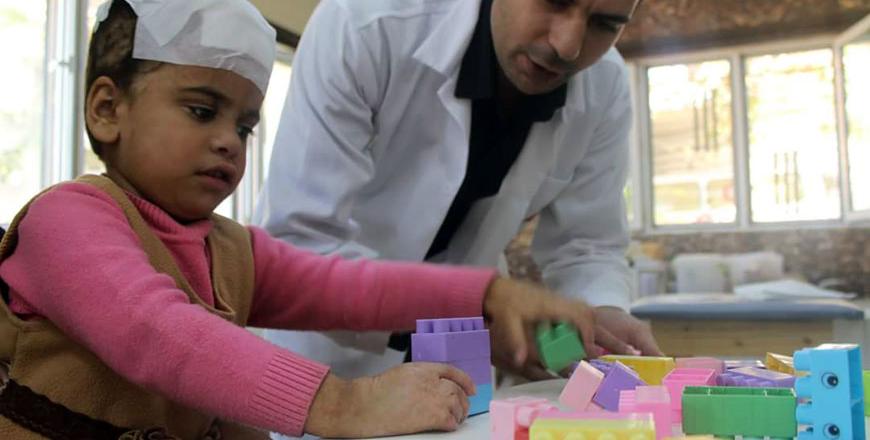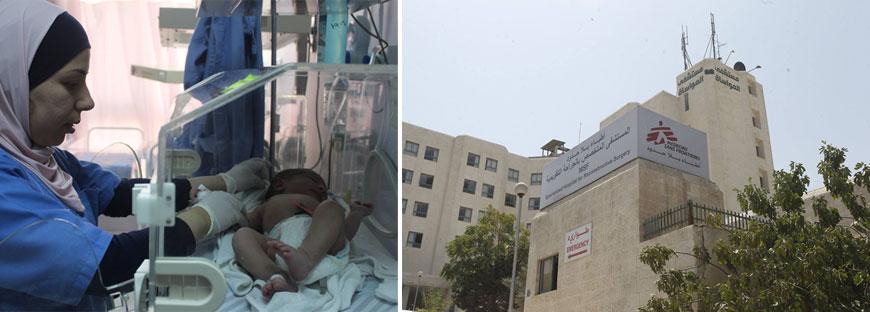You are here
MSF calls for facilitating flow of medical, food aid into Yemen
By Dana Al Emam - Aug 10,2015 - Last updated at Aug 10,2015

Médecins Sans Frontières mission chief in Yemen, Ghazali Babiker, speaks at a press conference in Amman on Monday (Petra photo)
AMMAN — Médecins Sans Frontières (MSF) mission in Yemen on Monday called on the international community and concerned parties to facilitate the delivery of medical and food assistance to all Yemenis, as soon as possible.
At a meeting with the press in Amman, the MSF mission chief in Yemen, Ghazali Babiker, said the war has damaged many health facilities and closed down others, with only three out of 14 hospitals operating at present.
He highlighted the shortage in medical supplies amidst the “shy” international response to the crisis as a major challenge to the organisation’s work in Yemen, adding that slow processing of assistance and bureaucracy sometimes lead to coufiscation of aid or not allowing its entry.
“There are tremendous humanitarian needs in Yemen that exceed the abilities of organisations currently working on the ground,” Babiker said.
Only from March until now, MSF teams in Yemen, which work in eight governorates, were able to treat over 9,000 war patients, perform over 4,000 operations and receive some 56,000 emergency patients.
Thierry Goffeau, MSF project coordinator in Aden over the past three months, said although he has worked in several war zones, he has never seen anything like the situation in Yemen, where the health system is collapsing.
He noted that a daily average of 40 new trauma patients enter MSF hospitals, with the number exceeding 200 during days of intense clashes, including burned bodies and shredded limbs.
With the MSF and International Committee of the Red Cross missions being the only two healthcare organisations working to assist Yemen’s three remaining open hospitals, Goffeau said hospitals and health centres are “overcrowded”.
He described how MSF classifies its facilities into four zones according to the type and intensity of cases to be admitted in them.
The red zone includes patients in need of immediate intensive care and admission to operating theatres, while the yellow zone is allocated for cases in need of intensive care, but can wait for a couple of days before undergoing surgery.
The green zone is for patients with minor injuries, while the black one is for the ones who arrive dead or cannot be saved.
Through his face-to-face interactions with war patients, Tamam Odat, deputy medical coordinator of the mission, said he has realised that Yemenis are in great need for healthcare missions on the ground.
“The notion that people are lost in the number of casualties is dreadful,” he said, noting that the shortage in health supplies is the reason for the increase in healthcare prices beyond the capabilities of average Yemenis.
The physician said hospitals spend the majority of their income on fuel to keep power generators working, with less and less allocations for healthcare.
“Although doctors’ examinations are free of charge, many are unable to afford following up on the medication plan, with expensive prescribed tests and medications,” he said, adding that malnutrition cases among children are increasing sharply due to an “extreme” shortage of food.
Odat said the current water and sanitation conditions in Yemen are contributing factors to the spread of communicable diseases, citing 3,000 cases of dengue fever, and expecting cholera, measles and meningitis cases to emerge.
Furthermore, the sight of weapons, shelling and warplanes, the very harsh conditions of shelters and the lack of food — all contribute to psychological problems, especially among children, who now can be seen widely carrying weapons, the doctor warned.
Related Articles
AMMAN — Hanan from Iraq and Najwa from Gaza now call themselves “neighbours”, as their rooms at the new Médecins Sans Frontières (MSF) Hospi
AMMAN — Médecins Sans Frontières (MSF) eyes further official Jordanian facilitation for the process of cross-border aid supply to hospitals
GENEVA — The medical charity Medecins Sans Frontieres (Doctors Without Borders, MSF) is closing most of its 37 cholera treatment centres in


















